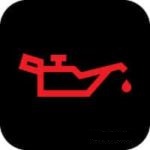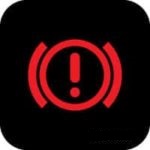Dashboard Warning Lights
Each time you start your car the dashboard lights up with lots of symbols, but what do they mean? - and what do you do if one stays on?
The following is a list of dashboard warning lights are most commonly used by vehicle manufacturers.
Not all dashboard warning lights are the same and some have different meanings.
Always refer to your vehicle owner's manual when you're not 100% sure what the light indicates.
 |
Check Engine |
If this warning light illuminates it is very important to have your car checked, even if it feels normal to drive. This warns of a potential problem with the engine. A proper diagnosis is critical to prevent potential damage. |
|
 |
Oil Pressure |
An oil warning light is one of the most serious warning lights. Do not ignore this light, Stop the engine immediately and consult your owners manual. You may simply have to top up the oil but if it remains on there could be a much more serious problem that would require investigation by a auto mechanic. |
|
 |
Brake System Warning |
A brake system warning light can also be a serious warning light that requires urgent attention. The brake fluid may be too low and requires refilling or that a brake pad wear sensor is faulty, but it could be a more serious issue with the braking system. This should be checked out immediately to find the cause, if the brake pedal feels spongy or sinks all the way to the floow when pressed the car should definitely not be driven any further. |
|
 |
Battery Charge Warning |
This warning light could be caused by a faulty battery that would need replacing or could be due to a problem with the car's electrical system which could include the wiring, alternator or alternator drive belt. | |
 |
Engine Temperature Warning |
This warning light should also be treated as serious. When this light is illuminated the engine is running too hot or there is not enough coolant, if the engine continues to run under these circumstances it could lead to catastrophic failure of the engine if you do not turn it off immediately. You should stop the car immediately and have it looked at by an auto mechanic. |
|
 |
Low Fuel Warning |
This light comes on when the amount of fuel in the tank has passed a certain level. It is designed to give you enough warning to find a petrol station to refill the tank. |
|
 |
Tyre Pressure Sensor Warning |
The Tyre pressure monitoring system monitors the amount of air in your tyres, if it detects a drop then it will provide a warning by illuminating this warning light. You will need to check and inflate the tyre, this is important as low pressures can affect braking and cornering. |
|
 |
Traction Control Warning |
Traction control light will appear when the wheels of your car lose grip with the surface of the road, it gives you a visual indication that you are close to the limit of grip. If this light is on constantly then it usually means that the traction control has been deactivated, if so you should switch the system back on. |
|
|
|
Seatbelt Warning |
This warning light is used to warn you that you or any of your passengers do not have their seatbelts fastened. | |
 |
Door Warning |
This indicates that one of the car doors is open, which should be closed before moving the vehicle. | |
 |
Brake Pad Warning |
This light means that the vehicles brake pads are worn | |
 |
Parking Brake Warning |
This light advises you that the parking/Handbrake in engaged. | |
 |
Anti-Lock Braking System (ABS) |
This could indicate that there is a malfunction in the ABS system, this should be checked out by an auto mechanic to find the solution to this problem. | |
 |
Airbag Indicator |
This light turns on when the front airbag is switched off or if there is a fault in the system. If this light stays on then a proper diagnosis is required. |
|
 |
Exterior Light Fault Warning |
This means that an exterior light bulb has failed, this could be any of the light on the exterior of the vehicle e.g. Headlights, fog lights,taillights, brake light, indicators or number plate lights | |
 |
Bonnet Open Warning |
This indicates that the bonnet is not closed properly. You should ensure the bonnet is closed properly before driving the vehicle to prevent damage. |







